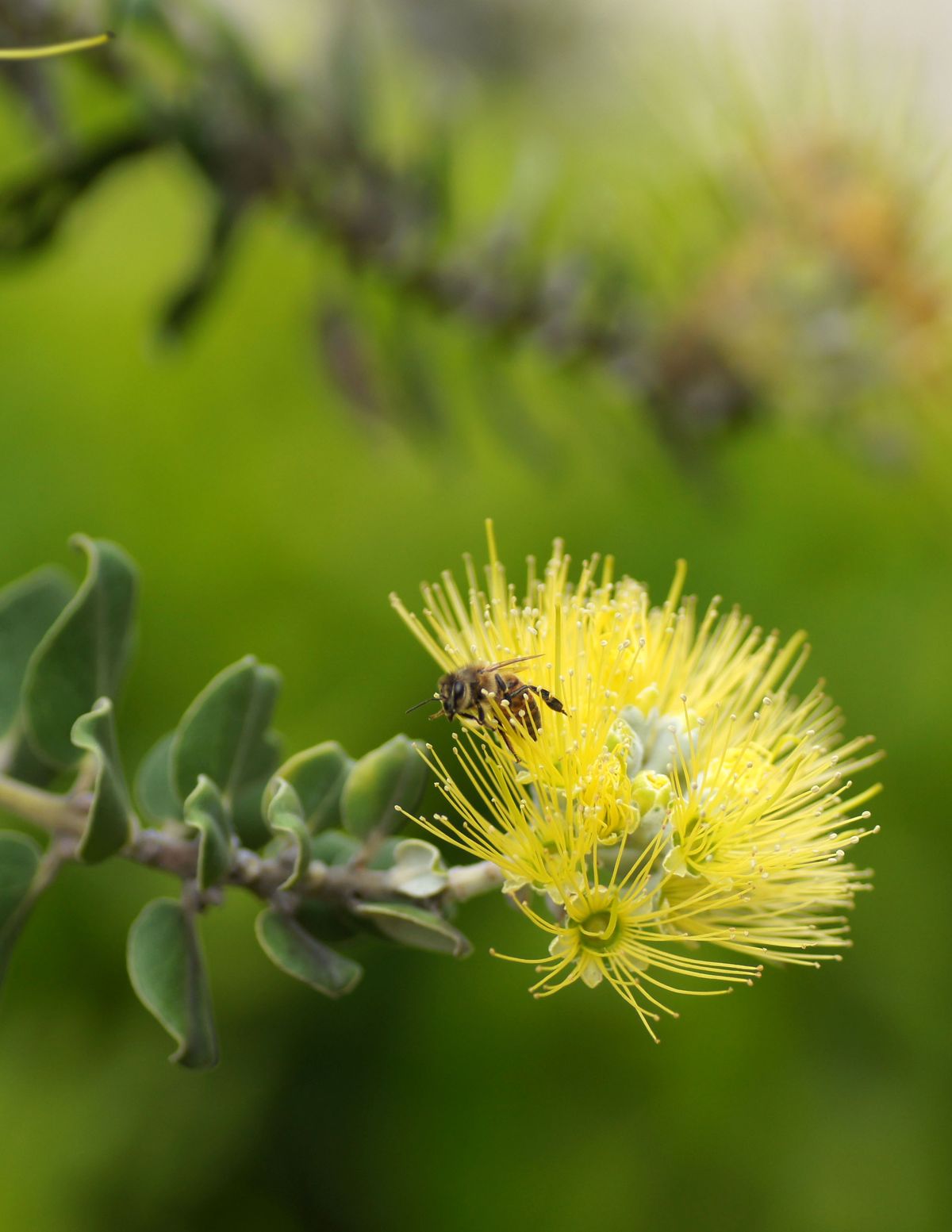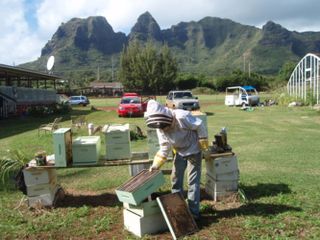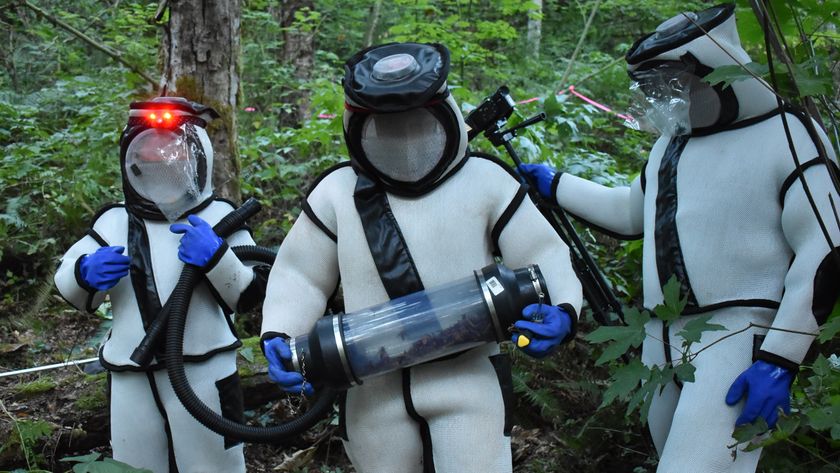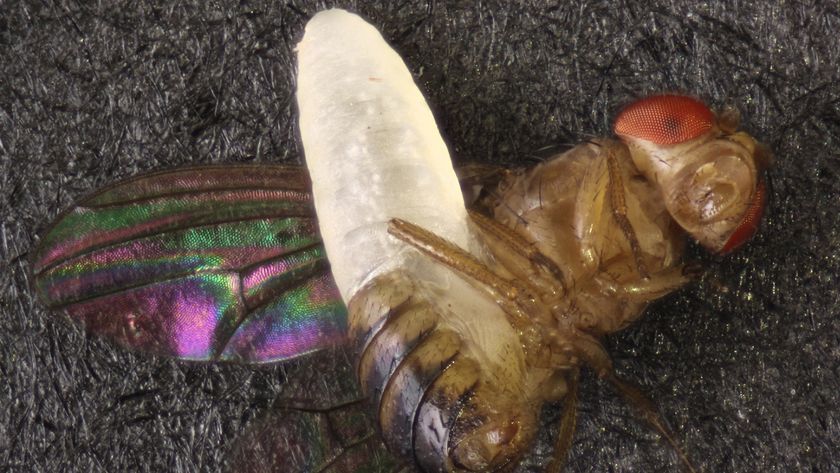Mites and Virus Team Up to Wipe Out Beehives

The spread of a parasitic mite through a honeybee colony provides a one-two punch that's taking down colonies throughout the world, now including Hawaii. A normally mild virus can be devastating to bees when the mites are present, a new study reports.
The mite, called Varroa, is spreading from hive to hive among the Hawaiian Islands. In other parts of the world, the coincidence of the mite and deformed wing virus has been linked to so-called colony collapse disorder, though researchers weren't sure how the two infections, normally not very deadly, were able to kill entire hives.
"During the past 50 years, the global spread of the ectoparasitic mite Varroa destructor has resulted in the death of millions of honeybee (Apis mellifera) colonies," the researchers write in their study, detailed today (June 7) in the journal Science.
Mighty mite
Like a teensy vampire, a Varroa mite attaches to the body of the bee and sucks out its internal, bloodlike fluid. During this sucking, the mite passes deformed wing virus (DWV) directly into its host's body. Once the bees start to show the resulting deformation, they usually die within 48 hours.
The mites have been infesting bees on the Hawaiian island of Oahu since 2007. That same year, 274 of 419 colonies on Oahu collapsed.

To figure out how the mites led to this devastation, the researchers studied bees from hundreds of honeybee colonies on the four main Hawaiian Islands as the mites spread across them. They analyzed bees from the hives to check for the genetic signature of the Varroa mites and five viruses including DWV, which had been associated with sick colonies before.
Sign up for the Live Science daily newsletter now
Get the world’s most fascinating discoveries delivered straight to your inbox.
If all of the viruses were present in the mite-infected colonies at high levels, this would mean the mite's bite suppresses the bee's immune system. But if only deformed wing virus increased with the presence of the mite, researchers would know there was some special relationship between the two that led to colony collapse.
Viral spread
On its own, the deformed wing virus infects healthy bee hives at low levels: The researchers found that in colonies without mites, 10 percent of the hive's bees had DWV; when the mites were present, the virus was found in almost all bees they tested from the hive. These mite-infested bees also had much more of the virus in their blood than bees in mite-free hives.
In fact, one strain of deformed wing virus dominated the mite-infected colonies. When the mites were present, it seemed to out-compete all other viruses — infested colonies had fewer other viruses. Even after a year of effective control of the mites on Oahu, that strain was still dominating the viral landscape: The mites completely changed the disease profile in the hives.
"The spread of Varroa in Hawaii has caused DWV, originally an insect virus of low prevalence, to emerge," the researchers write. "This association may be responsible for the death of millions of colonies worldwide wherever Varroa and DWV co-occur."
Figuring out how to treat the mite-virus attack could help save bee colonies worldwide.
Follow Jennifer Welsh on Twitter @microbelover or LiveScience @livescience. We're also on Facebook & Google+.
Jennifer Welsh is a Connecticut-based science writer and editor and a regular contributor to Live Science. She also has several years of bench work in cancer research and anti-viral drug discovery under her belt. She has previously written for Science News, VerywellHealth, The Scientist, Discover Magazine, WIRED Science, and Business Insider.












